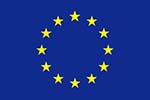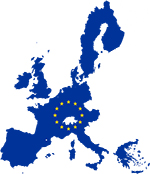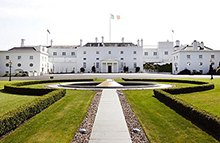HISTORY OF THE COUNCIL OF THE EU
Many historical events have shaped the council as we know it today. Here is a walkthrough of all the activities that led to its formation and development over the years:
- 1951
 It all began on 18th April in 1951 with a Paris Treaty which created the European Coal and Steel Community (ECSC) on 23rd July 1952. This body came into formation in a bid to have one market for the trading of coal and steel which would positively impact regions in play. After World War II, it was clear that there was tension between states and this had affected trades in that there was a lot of mistrust in play, which the body eased. Though this treaty expired in 2002, it paved the way for other such agreements which have enabled the economic growth of European nations. It all began on 18th April in 1951 with a Paris Treaty which created the European Coal and Steel Community (ECSC) on 23rd July 1952. This body came into formation in a bid to have one market for the trading of coal and steel which would positively impact regions in play. After World War II, it was clear that there was tension between states and this had affected trades in that there was a lot of mistrust in play, which the body eased. Though this treaty expired in 2002, it paved the way for other such agreements which have enabled the economic growth of European nations.
Later in 1952, the chosen ministers of the ECSC held a meeting in Luxembourg to discuss how the operations would take place. Though they did not realize it at the time, this first meeting set the pace for what would eventually become the council of the EU as we know it today.
- 1958
 There were Rome treaties in play which led to the creation of the European Economic Community (EEC) and the Euratom. The inaugural meeting of its kind took place in January 1958 with Victor Larock as the chair. He was the foreign affairs minister in Belgium at the time. There were Rome treaties in play which led to the creation of the European Economic Community (EEC) and the Euratom. The inaugural meeting of its kind took place in January 1958 with Victor Larock as the chair. He was the foreign affairs minister in Belgium at the time.
- 1965
If you ever wondered why there is unanimous voting where matters of high interest are of concern, here is an intriguing story as to this. In 1965, France stated that they would not be party to any council meetings as they had fallen out with other states regarding the financing of an agriculture policy. On seeing that lack of one voice could get in the way of peaceful negotiations, member states held a meeting in Luxembourg in 1966 where they agreed on unanimity where the matters at hand were of a sensitive nature.
- 1967
The three communities, i.e., ECSC, EEC, and Euratom, merged to be one council, one commission, all operating with one budget. From here, developments began to take place at a fast rate.
- 1973
 The European community before 1973 comprised nine member states. Ireland, the United Kingdom, and Denmark joined the existing nations in 1973, bringing the total number of countries to nine, and thus increasing the influence of the council. In the same year, there was a Copenhagen summit and the decision reached was that members could hold summits whenever they deemed it necessary. The European community before 1973 comprised nine member states. Ireland, the United Kingdom, and Denmark joined the existing nations in 1973, bringing the total number of countries to nine, and thus increasing the influence of the council. In the same year, there was a Copenhagen summit and the decision reached was that members could hold summits whenever they deemed it necessary.
- 1974
In light of the conclusion reached in the previous year�s summit, members found it necessary to hold a meeting in which they established the European Council. The goal behind its formation was to provide an avenue where heads of states or government could come together and informally discuss issues affecting their countries. In this way, there would be more cohesion between the member states.
- 1975
The European Council held its first meeting in Dublin, and it was a success.
- 1981
With Greece in tow, the communities boasted of ten nations, and thus their influence was on the rise.
- 1985
 Netherlands, Belgium, France, Luxembourg, and Germany held a meeting in Schengen where they agreed to ease up on the border controls. In this way, citizens of the member states could travel from one country to the other without getting their travel documents checked at the internal borders. However, the implementation of this agreement took place ten years later. In the same year, the European Council adopted the Single European Act (SEA). Netherlands, Belgium, France, Luxembourg, and Germany held a meeting in Schengen where they agreed to ease up on the border controls. In this way, citizens of the member states could travel from one country to the other without getting their travel documents checked at the internal borders. However, the implementation of this agreement took place ten years later. In the same year, the European Council adopted the Single European Act (SEA).
- 1986
Other countries had seen the fruits of the council at this point, and thus Spain and Portugal too joined the communities, thus bringing the number of members to twelve.
- 1987
The SEA established an internal market to allow for free movement of goods, services, people and capital. It also allowed for majority voting within the council.
- 1995
 Austria, Sweden, and Finland joined the EU, bringing the total states to 15, thus covering most of Western Europe. Austria, Sweden, and Finland joined the EU, bringing the total states to 15, thus covering most of Western Europe.
It is through these advancements that the euro came to be and entered markets in 2002, replacing national currencies in member states in the process. In 2004, ten other countries joined the EU before Bulgaria and Romania did so in 2007. There are many more advancements that have taken place over the years, but the ones mentioned above indeed paved the way for the council�s operations to-date.
|



 It all began on 18th April in 1951 with a Paris Treaty which created the European Coal and Steel Community (ECSC) on 23rd July 1952. This body came into
It all began on 18th April in 1951 with a Paris Treaty which created the European Coal and Steel Community (ECSC) on 23rd July 1952. This body came into  There were Rome treaties in play which led to the creation of the European Economic Community (EEC) and the
There were Rome treaties in play which led to the creation of the European Economic Community (EEC) and the  The European community before 1973 comprised nine member states. Ireland, the United Kingdom, and Denmark joined the existing nations in 1973, bringing the total number of countries to nine, and thus increasing the influence of the council. In the same year, there was a Copenhagen summit and the decision reached was that members could hold summits whenever they deemed it necessary.
The European community before 1973 comprised nine member states. Ireland, the United Kingdom, and Denmark joined the existing nations in 1973, bringing the total number of countries to nine, and thus increasing the influence of the council. In the same year, there was a Copenhagen summit and the decision reached was that members could hold summits whenever they deemed it necessary. Netherlands, Belgium, France, Luxembourg, and Germany held a meeting in Schengen where they agreed to ease up on the border controls. In this way, citizens of the member states could travel from one country to the other without getting their travel documents checked at the internal borders. However, the implementation of this agreement took place ten years later. In the same year, the European Council adopted the
Netherlands, Belgium, France, Luxembourg, and Germany held a meeting in Schengen where they agreed to ease up on the border controls. In this way, citizens of the member states could travel from one country to the other without getting their travel documents checked at the internal borders. However, the implementation of this agreement took place ten years later. In the same year, the European Council adopted the  Austria, Sweden, and Finland joined the EU, bringing the total states to 15, thus covering most of Western Europe.
Austria, Sweden, and Finland joined the EU, bringing the total states to 15, thus covering most of Western Europe.
